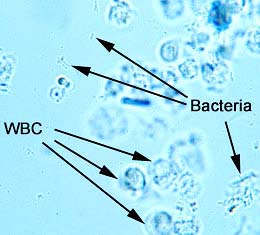Microscopic examination of urine expressing microscopically observed leucocytes, erythrocytes, and casts in urine, both with centrifugation,
Testing 
Specimen:Urine patient
Equipment:
tube, centrifuge,timer,pipette transfer,microscope side, cover slip,microscopy
Testing:
- Urine take in tube 3/4 of tube
- Take to centrifuge 3000rmp/1mn at 5 minutes
- Decant out of above liquid
- Pipette transfer sucks sediment take on microscope side and cover slip
- Examination with microscopic





Reference:
www.time2026end.com
Laboratory book livre de lavoratorie 1th edition 1999
https://www.google.com/url?sa=i&url=http%3A%2F%2Fe-learning.studmed.unibe.ch%2FUroSurf_EN%2Ftheory%2Fsedimethods2.html%3Furosurf%7Ctheory%7Csediment%7Csedimethods%7C2&psig=AOvVaw0KIQHg49jHVyHFdvza_3TL&ust=1582250323839000&source=images&cd=vfe&ved=0CAMQjB1qFwoTCNDK8fmD3-cCFQAAAAAdAAAAABAg
Comments